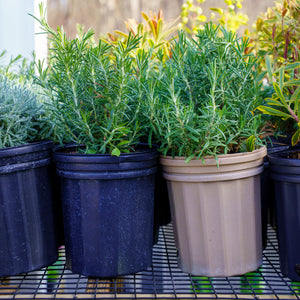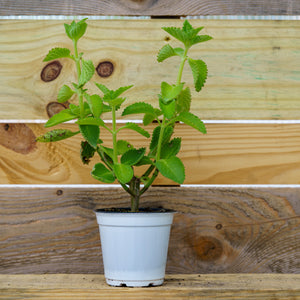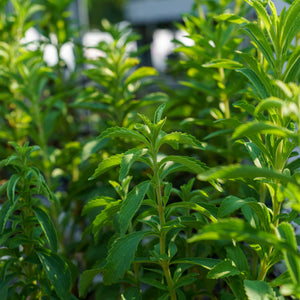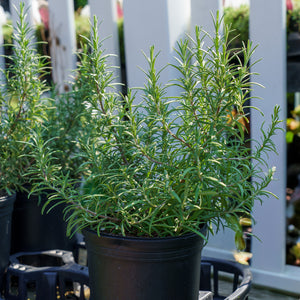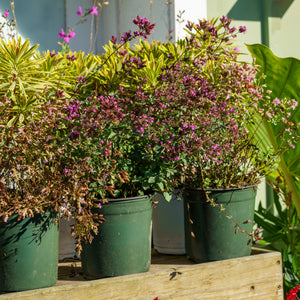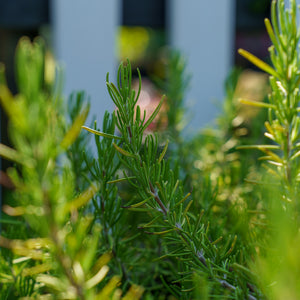The Herb Guide
Herbs bring a touch of culinary delight, medicinal benefits, and aromatic charm to any garden landscape. Known for their diverse range of uses and fragrant foliage, herb plants are perfect for adding texture and functionality to borders, garden beds, and containers. These plants are admired for their ability to thrive in various conditions and their relatively easy care. Whether you're aiming to enhance your garden's visual appeal, create a kitchen garden, or add a unique element to your space, herbs offer a captivating and versatile solution. Explore our Herb Guide to learn more about cultivating and caring for these useful plants, and discover how to incorporate them into your garden for lasting beauty and enjoyment.
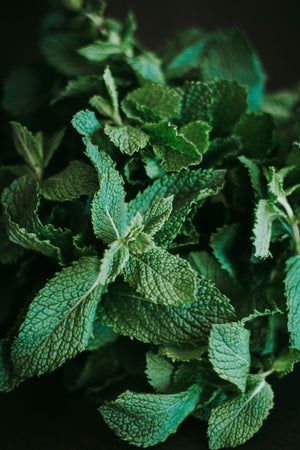
About Herbs
Herbs are a diverse group of plants used for their aromatic, culinary, medicinal, and ornamental properties. They belong to various plant families, with some of the most common being the Lamiaceae (mint), Apiaceae (carrot), and Asteraceae (daisy) families. Herbs have been cultivated and used by humans for thousands of years, with evidence of their use dating back to ancient civilizations.
Herbs are known for their fragrant foliage and diverse forms. Some herbs, such as basil and cilantro, are annuals that complete their life cycle in one growing season, while others, such as rosemary and thyme, are perennials that come back year after year. The leaves, stems, flowers, seeds, and roots of herbs can be used in cooking, medicine, and aromatherapy, making them incredibly versatile and valuable plants.
Some popular herbs include:
- Basil (Ocimum basilicum): Known for its aromatic leaves and essential in many culinary dishes.
- Rosemary (Salvia rosmarinus): A woody perennial herb with needle-like leaves and a strong fragrance.
- Thyme (Thymus vulgaris): A low-growing perennial with tiny, aromatic leaves used in cooking and medicine.
- Mint (Mentha spp.): A vigorous perennial with aromatic leaves, often used in teas and desserts.
- Lavender (Lavandula spp.): Known for its fragrant flowers and used in aromatherapy and culinary dishes.
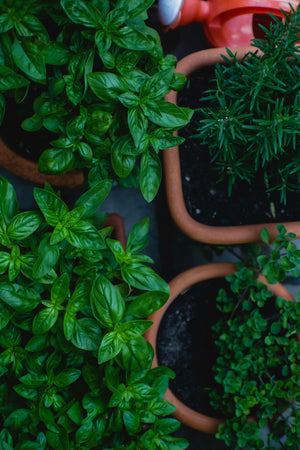
Planting Herbs
Herb plants require specific planting conditions to ensure their successful establishment and flourishing growth. Here are some essential guidelines for planting and caring for herbs:
Soil: Most herbs prefer well-draining soil that is moderately fertile. A loamy or sandy soil works best. Ensure the planting site is free from heavy clay or waterlogged conditions, which can cause root rot. Adding compost or well-rotted manure can improve soil fertility and drainage.
Light: Herbs thrive in full sun but can tolerate partial shade. Choose a location with at least six hours of direct sunlight per day for optimal growth. In hotter climates, some afternoon shade can help protect the plants from intense heat.
Watering: Herbs require regular watering to keep the soil consistently moist but not waterlogged. Water the plants deeply, allowing the top inch of soil to dry out between waterings. During hot, dry periods, increase the frequency of watering to maintain soil moisture.
Planting Depth: Plant herbs at the same depth as they were growing in their pot or nursery container. Space the plants according to their mature size, usually 6-24 inches apart, to allow for proper air circulation and growth. When planting in the ground, dig a hole twice as wide and the same depth as the root ball to encourage root spread.
Mulching: Apply a layer of organic mulch, such as compost or shredded leaves, around the base of the plants to retain moisture, suppress weeds, and regulate soil temperature. Avoid covering the crowns directly, as this can lead to rot.
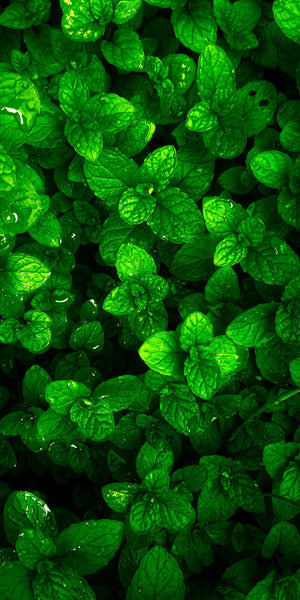
Care for Herbs
Herb plants require specific care to ensure their optimal growth and health. Here are some general guidelines for the care of herbs:
Watering: Keep the soil consistently moist during the growing season but avoid waterlogging. Water the plants deeply, allowing the top inch of soil to dry out between waterings. During hot, dry periods, increase the frequency of watering to maintain soil moisture.
Fertilizing: Most herbs do not require heavy fertilization. A light application of a balanced, slow-release fertilizer in the spring can support growth. Follow the recommended dosage on the product label. Over-fertilizing can reduce the flavor and fragrance of the herbs.
Pruning: Regular pruning encourages bushier growth and prevents herbs from becoming leggy. Pinch back the growing tips of herbs like basil, mint, and thyme to promote branching. Remove any dead or damaged foliage to maintain a tidy appearance. Pruning is best done in late spring or early summer.
Pests and Diseases: Herbs are relatively pest-resistant but can be susceptible to issues such as aphids, spider mites, and powdery mildew. Inspect your plants regularly and treat any infestations promptly with appropriate organic or chemical controls. Maintain proper spacing and air circulation to reduce the risk of diseases.
Winter Care: In colder climates, perennial herbs may need protection during the winter. Mulch around the base of the plants to insulate the roots. For tender perennials like rosemary, consider growing them in containers that can be brought indoors during the winter months.
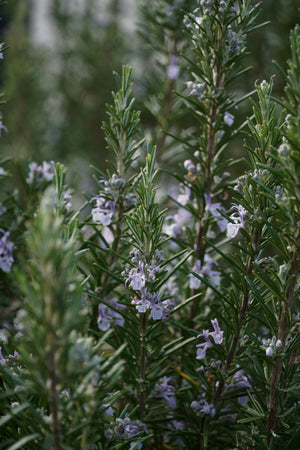
How to Use Herbs
Herbs offer versatility and can be utilized in various ways to enhance your garden and outdoor spaces. Here are some recommendations based on their characteristics:
Culinary Uses: Herbs are essential in cooking, adding flavor and aroma to a wide range of dishes. Use fresh or dried leaves, flowers, seeds, and roots in your recipes to enhance the taste of your meals.
Medicinal Uses: Many herbs have medicinal properties and have been used in traditional medicine for centuries. Create herbal teas, tinctures, and salves to take advantage of their health benefits. Always consult with a healthcare professional before using herbs medicinally.
Aromatherapy: Herbs like lavender, rosemary, and mint are popular in aromatherapy for their calming and invigorating scents. Use the essential oils or dried herbs in sachets, potpourris, and diffusers to enjoy their aromatic benefits.
Container Gardening: Herbs can be grown in containers, making them a versatile choice for patios, balconies, or small gardens. Choose a large container with good drainage and place it in a sunny spot to enjoy the plants up close.
Companion Planting: Many herbs are beneficial companion plants in the garden, helping to repel pests and improve the growth of neighboring plants. For example, planting basil near tomatoes can enhance their flavor and deter pests.
Ornamental Uses: Herbs can be grown for their ornamental value, adding texture, color, and fragrance to your garden. Use them in borders, beds, and as ground covers to create a beautiful and functional landscape.
Conclusion
Herbs are a captivating and versatile addition to any garden or outdoor space. With their fragrant foliage, diverse uses, and relatively easy care, herb plants bring a touch of culinary delight, medicinal benefits, and aromatic charm to your environment. Their adaptability to various growing conditions and ease of care make them a favorite among gardeners of all levels. By following proper planting and maintenance techniques, you can fully harness the potential of herbs to enhance your garden, creating a lasting impact.
Whether you seek to create a productive kitchen garden, add visual interest to borders and beds, or enjoy their aromatic benefits, herbs can fulfill a variety of roles in your landscape design. Place them individually to highlight their unique characteristics, or combine different species and varieties for a dynamic and visually appealing display. Herbs’ resilience and adaptability also make them ideal for container gardening and companion planting.
Beyond their ornamental value, herbs contribute to the overall beauty and functionality of your garden ecosystem. With their enduring beauty, versatility, and ecological significance, herbs bring delight and natural allure to your outdoor environment, enriching your gardening experience and enhancing the overall beauty of your landscape.

